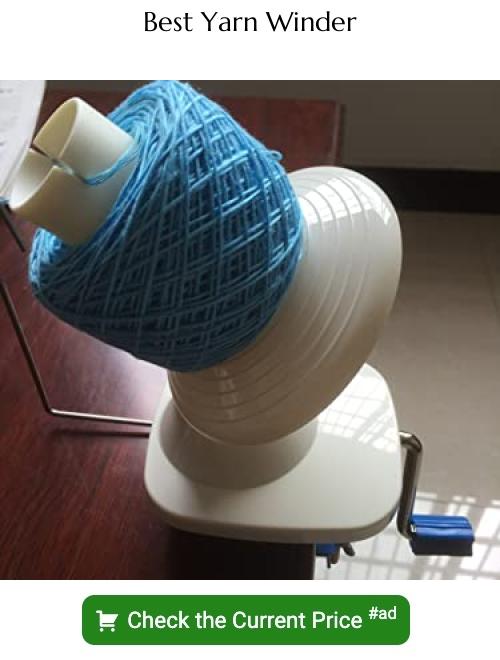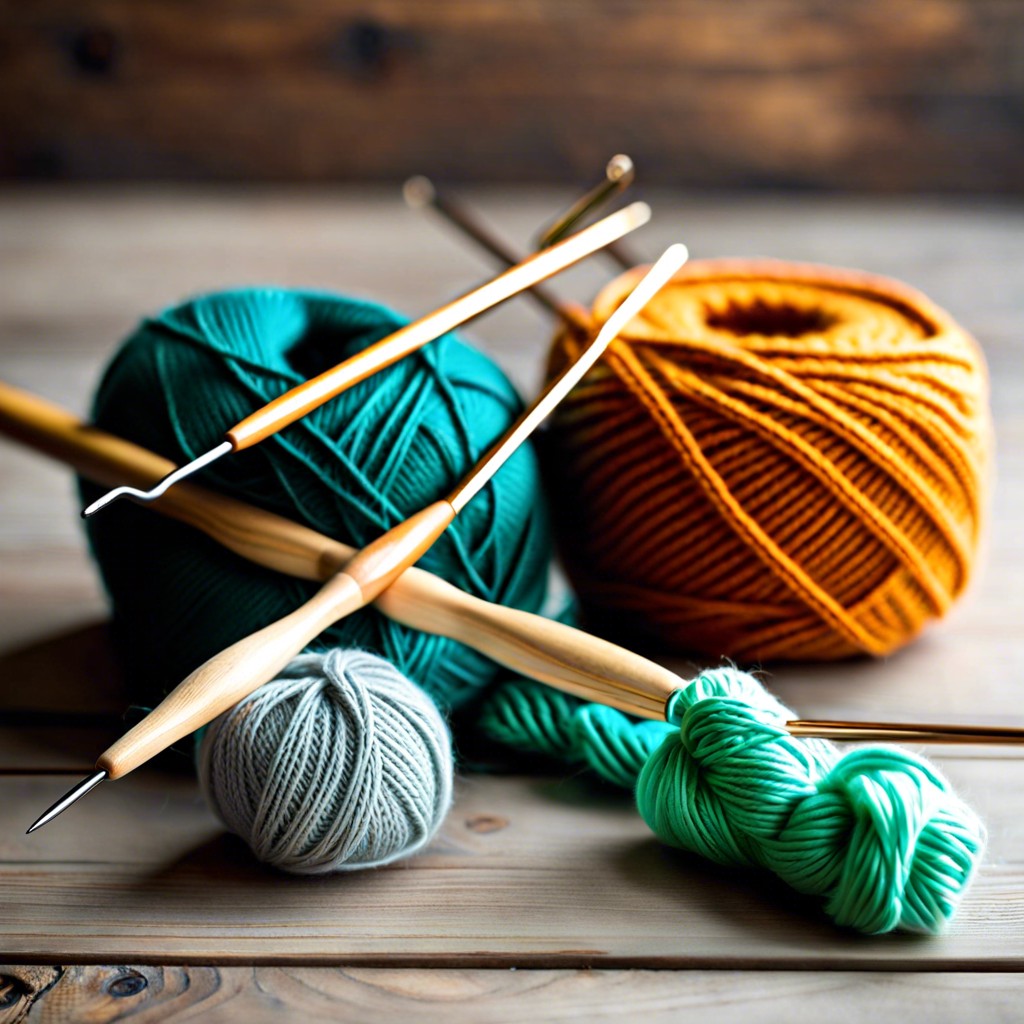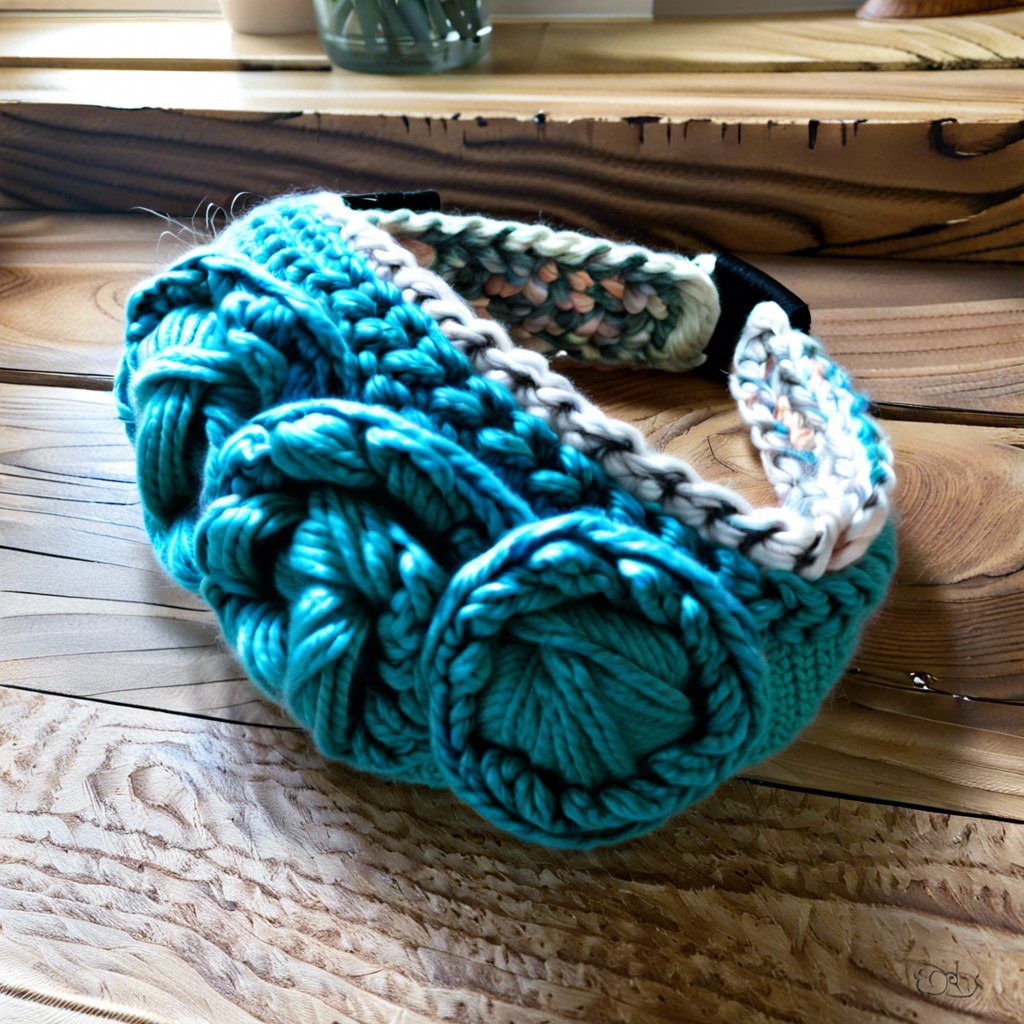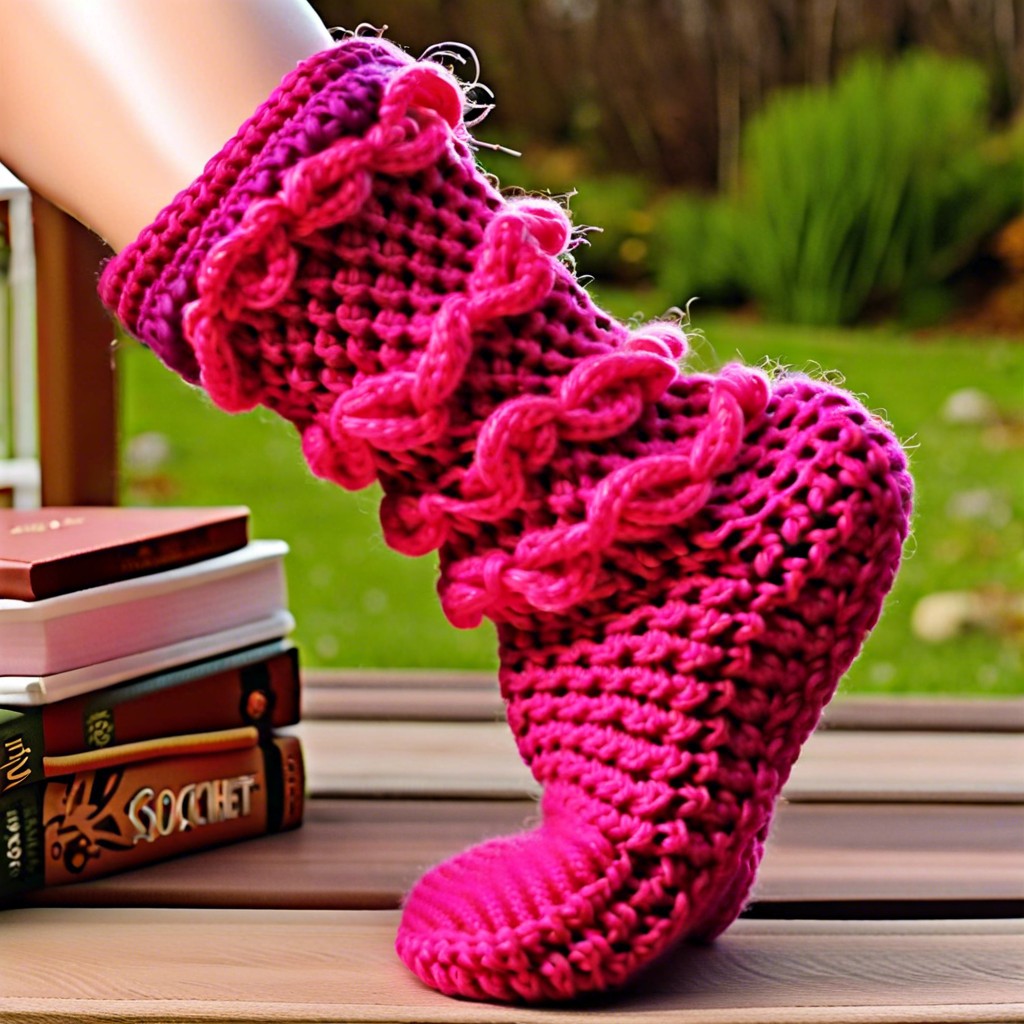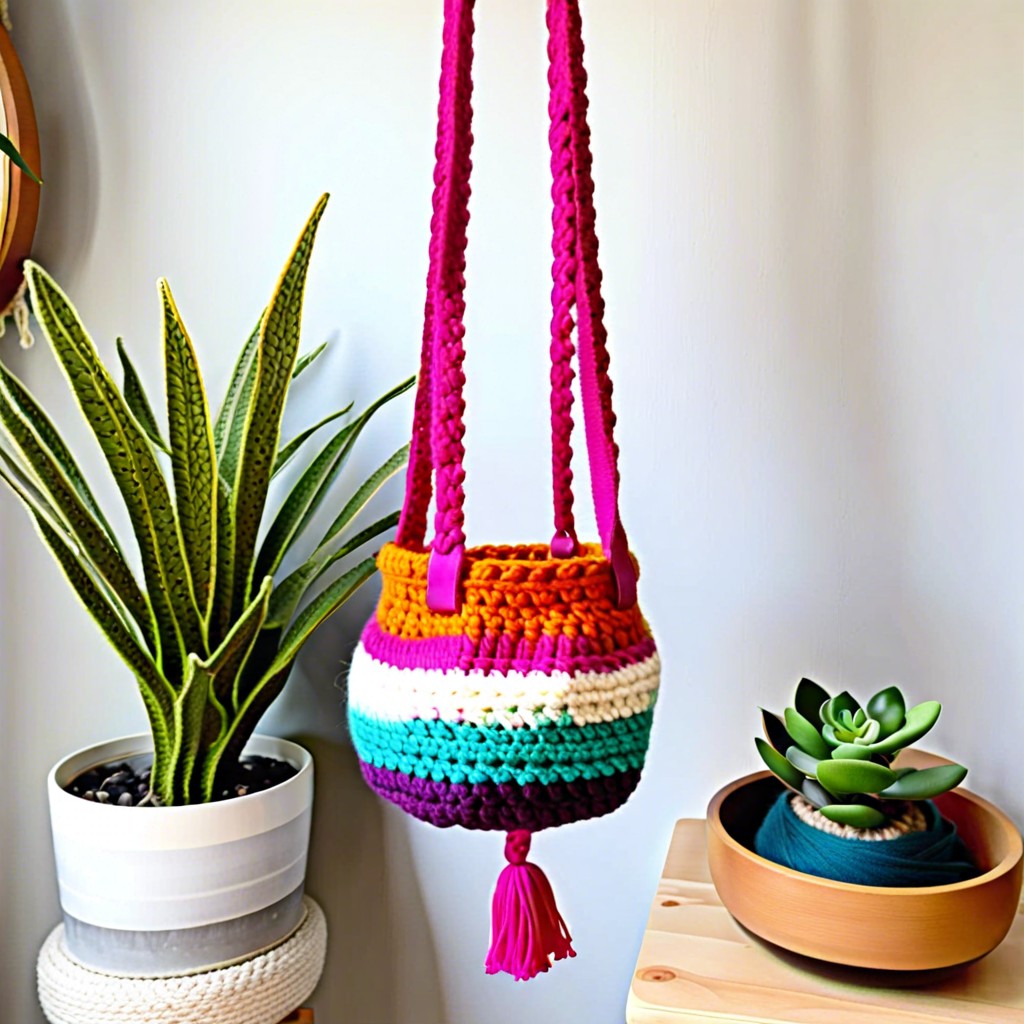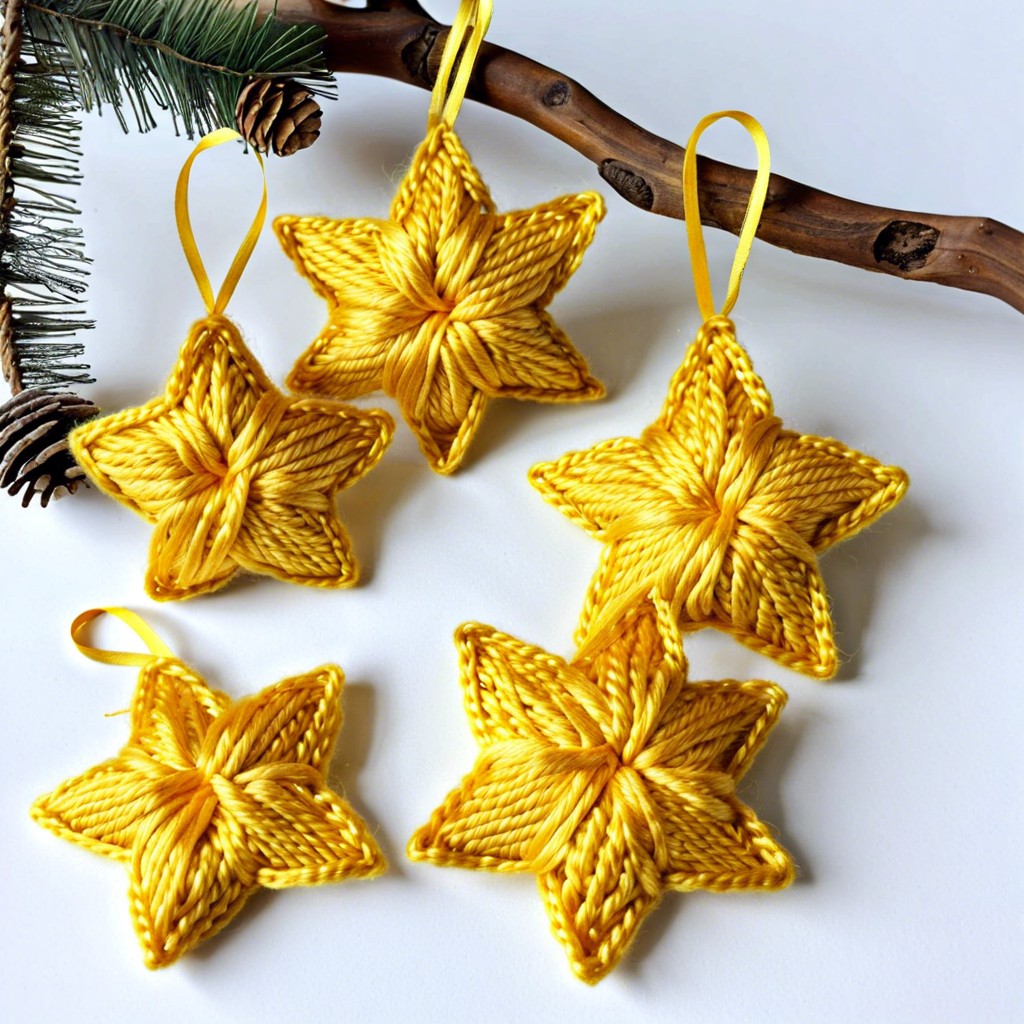Because tangled yarn can turn your relaxing crochet or knitting project into a stressful endeavour, understanding how to prevent this common issue is vital.
Tangling yarn can turn an enjoyable crafting session into a frustrating knot-filled nightmare. Luckily, there are several proven methods to keep your yarn from tangling, whether you’re working with a single skein or multiple balls for a colorwork project.
From using yarn bowls and bags to mastering the center-pull technique, to learning how to properly join new yarn, this article will provide you with all the necessary details and techniques to prevent your yarn from tangling.
By implementing these strategies, you’ll spend less time untangling knots and more time creating beautiful yarn crafts.
Key takeaways:
- Wind your yarn into balls or cakes using a yarn winder.
- Store each yarn skein or ball separately in a ziploc bag.
- Utilize yarn storage solutions like cubes or baskets.
- Use center-pull skeins and butterfly winding technique.
- Consider using yarn bowls for smooth yarn feed.
Causes of Yarn Tangling
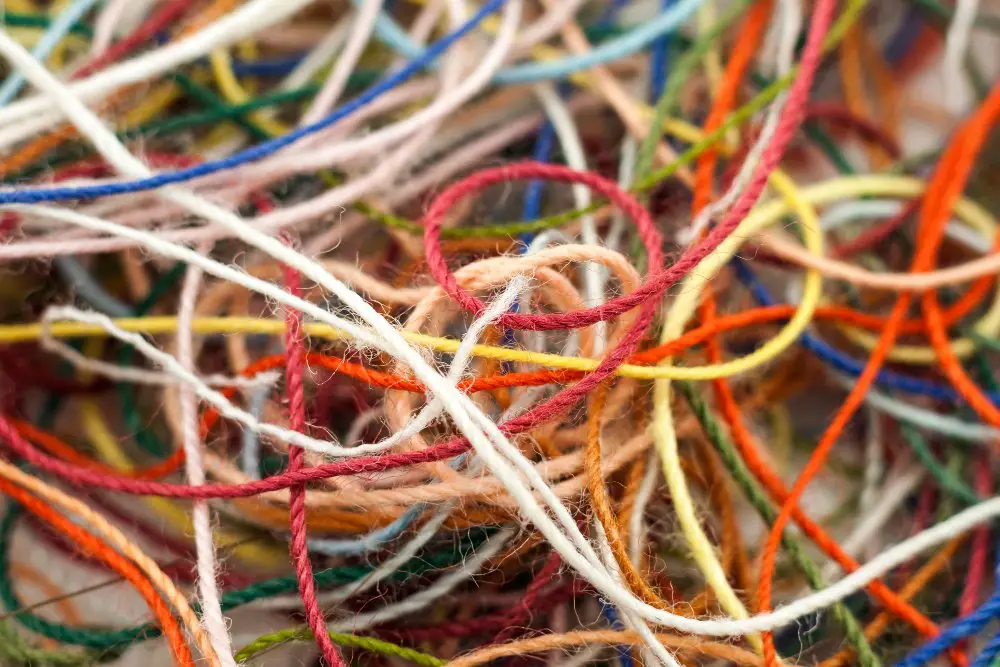
Tangling typically occurs during the extraction process, particularly when yarn is pulled from the outside of the skein rather than the inside. Leftover yarn that has not been properly stored can also get tangled.
Moreover, working with multiple skeins at once – often the case in colourwork projects – can lead to entanglements if not managed properly. Irregular handling or abrupt movements while knitting or crocheting might cause the yarn to twist on itself, increasing the chances for knots. Also, pets or children meddling with the yarn are common causes of tangling issues.
How to Properly Store Yarn to Avoid Tangling
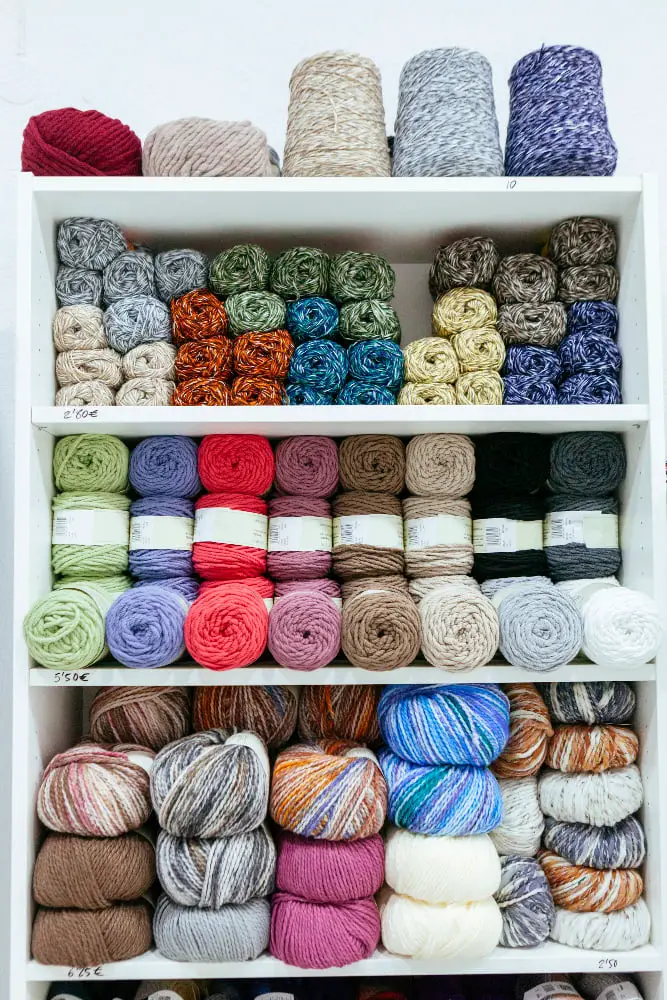
Storing yarn might seem like a mundane task, but doing it properly can greatly reduce the chances of it tangling. Here are some steps to follow:
1. Always Wind Your Yarn: Winding your yarn into balls or cakes using a yarn winder can help keep it compact and less prone to tangling.
2. Use Ziploc Bags: Store each yarn skein or ball separately in a ziploc bag. This will prevent them from getting tangled with each other.
3. Utilize Yarn Storage Solutions: Many storage solutions are designed specifically for yarn, ranging from cubes and baskets to specialized yarn containers.
4. Keep Yarn Labels: Retaining the original yarn band on the skeins until use can help stave off potential tangles.
Remember, proper storage is a proactive measure against tangles, so take the time to wind, bag, and store each piece of yarn in your stash.
Practical Techniques to Prevent Yarn Tangling While Knitting or Crocheting
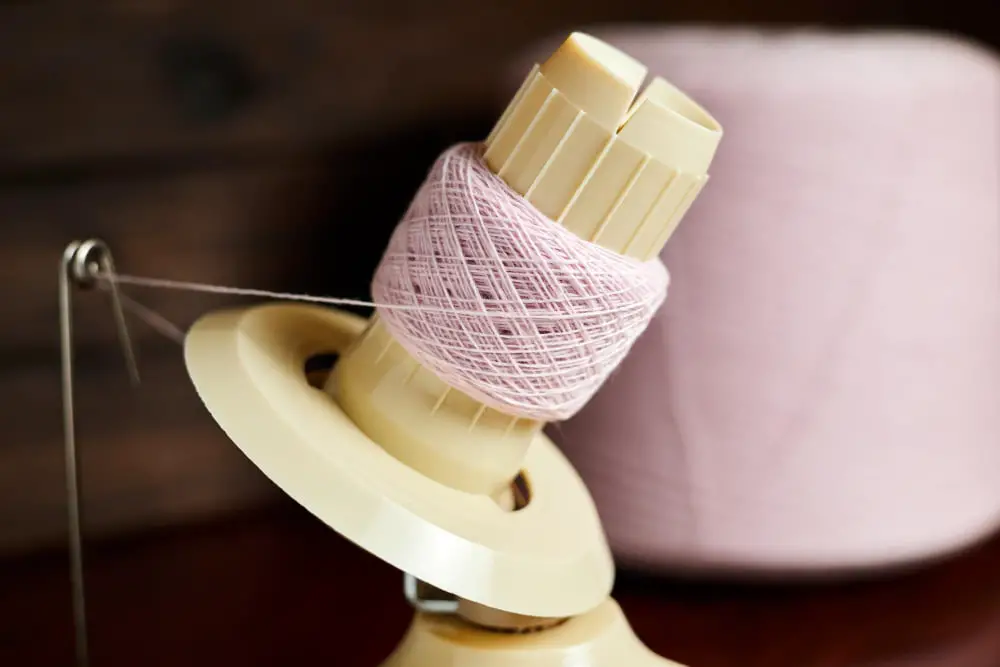
First, consider using a center-pull skein. This type of skein allows the yarn to be pulled from the middle, reducing outer movement and potential tangling.
Second, try the butterfly winding technique for smaller amounts of yarn. By wrapping your yarn in a specific manner, you can create a compact, easily manageable bundle that unravels without hassles.
Third, remember to avoid twisting your work higher than necessary. Too much twist can cause the yarn to coil onto itself.
Finally, consider investing in a yarn swift or winder. These tools can help keep your yarn controlled as you work, minimizing the chances of it becoming tangled.
These techniques emphasize maintaining control over your yarn’s movement, thus limiting opportunities for it to wrap upon itself and create knots.
Using Yarn Bowls to Prevent Tangling

Yarn bowls, skillfully crafted from materials like ceramic, wood, or plastic, offer an effective solution. Their key features, such as the spiral or ‘J’ shaped cuts, allow threads to pass through smoothly while maintaining the structural integrity of the yarn.
Ensuring the yarn feeds correctly from the bowl can minimize risks of tangling. Simply thread the loose end of the yarn through the cutout, then place the yarn ball or skein inside the bowl. This helps to both keep the yarn contained and allow it to unravel at a manageable pace as you work, effectively reducing the chances of knots and twisted yarn.
Additionally, their sturdy build maintains stability during use, meaning the yarn bowl will not tip or roll around – a common issue that often leads to yarn chaos when using traditional containers. And, the additional weight that comes from the materials used can also facilitate ease of use.
But remember, different types of yarn bowls are better suited for different types of yarn. Experiment with various designs to find one that fits your unique workspace and yarn type.
Do not try to force a fit. Different stroke for different folks is true for knitting or crocheting like in any area of life. Find your perfect yarn bowl and you will reduce one tangling reason to zero.
How to Detangle Yarn Safely Without Damage
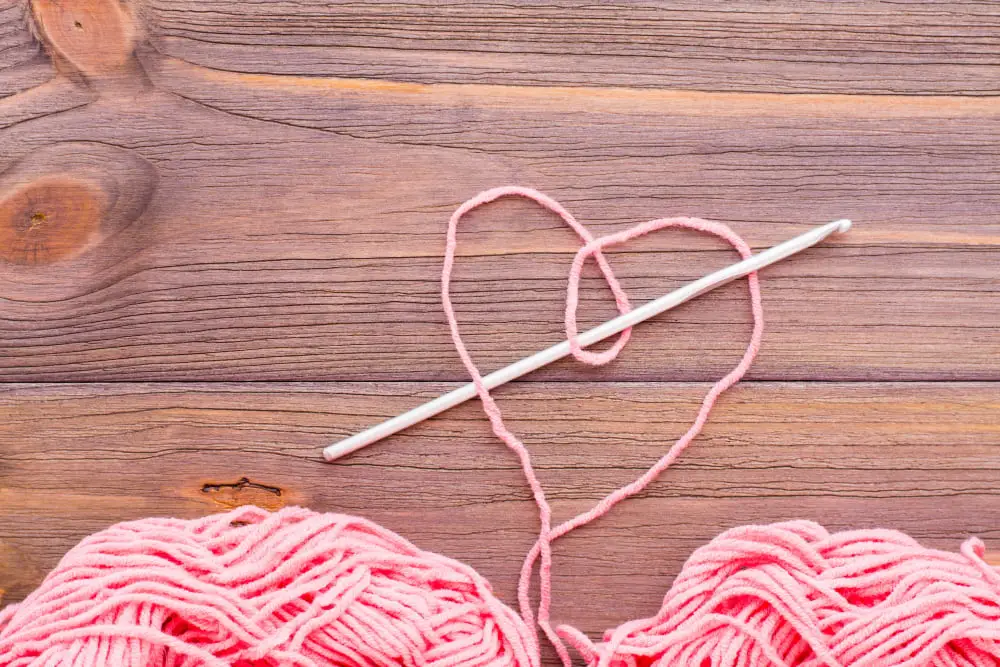
Start by isolating the problematic area and working on the knot one string at a time. It’s best to patiently use your fingers, although tools like a crochet hook can help tease out particularly stubborn knots. Always be gentle to avoid damaging the fibers.
In situations where the yarn knot is severe, alternate between working at the knot’s outside and slowly pulling the surrounding yarn away. There’s no need to rush, as pulling too hard can make the knot tighter or even break the yarn.
If the yarn becomes frizzy or stressed during the process, a conditioner can be used to rejuvenate it. Ensure it’s a gentle, fiber-friendly formula to avoid adverse reactions.
Lastly, once untangled, carefully roll the yarn into a ball or use a yarn winder to prevent future tangles. This step is vital in maintaining the smoothness and integrity of your yarn for future projects.
Maintenance Tips for a Tangle-Free Yarn Stash
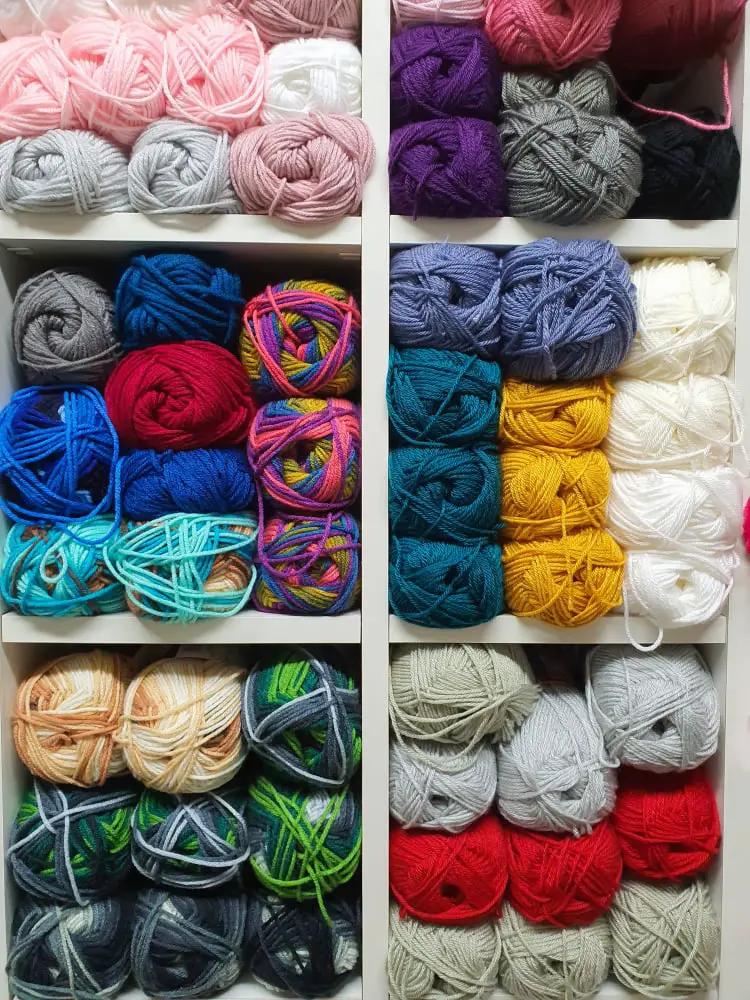
Once your yarn is untangled and neatly stored, maintaining that order is key. Consider these essential points to help you manage your stash effectively:
1. Regular Organization: Make a habit of organizing your yarn stash frequently based on weight, color, type, or any other criterion that suits you. This can help you avoid a knotty mess.
2. Correct Handling: Whenever you use a yarn, wind it back properly after finishing your work. Tangled yarn often starts from loose, improperly wound leftovers.
3. Usage of Tools: Consider tools like yarn winders or swifts for winding your yarn into neat, manageable cakes or balls. The investment can save you a lot of detangling time.
4. Handling Leftovers: Small leftovers can become chaotic very quickly. You could wind them around clothespins or bobbin pins to keep them separate and tangle-free.
5. Yarn Tension: Maintain a gentle, consistent tension while knitting or crocheting. Pulling too hard or too soft can cause the yarn to tangle.
Remember, prevention is always better than spending hours untangling your favorite yarn. A little awareness and discipline can lead to a hassle-free crafting experience.
Tips for Working With Multiple Yarn Skeins Without Tangling
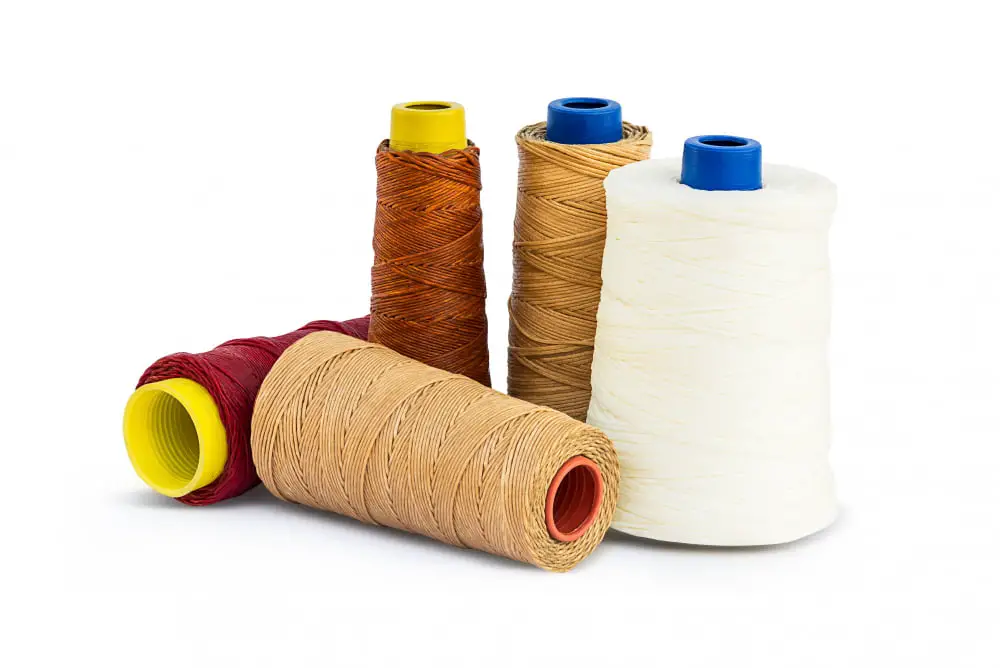
1. Maintain Separate Paths: Each skein should have its unique path. Keep the skeins apart from each other to prevent them from intertwining and causing knots.
2. Utilize Bobbins: If you’re working on projects with numerous color changes, like crochet tapestry or intarsia knitting, bobbins can be lifesavers. They keep a specific amount of yarn for the required color change and hinder tangling.
3. Butterfly Method: If you don’t have bobbins, the butterfly winding method can be an alternative. It allows you to keep a small amount of yarn tangle-free—just enough for a few rows or rounds.
4. Yarn Bags: Bags designed for yarn come with separate compartments for different skeins. Yarn gets fed through the holes in the bag, keeping the strands apart.
5. Use Yarn Containers: They allow strands to flow freely and limit yarn mobility, resulting in fewer tangles.
6. Yarn Swift and Ball Winder: They help form pull cakes where the yarn can be drawn from the center, leading to less movement and tangling possibility. Preferably, use each color from a separate pull skein.
Remember that any method you implement should work seamlessly with your crafting style for maximum efficiency and enjoyment.
FAQ
Why do skeins of yarn tangle?
Skeins of yarn tend to tangle primarily when there aren’t enough ties holding the yarn together, causing some strands to shift to an area where they don’t belong.
What are the best techniques for preventing yarn from tangling when crocheting or knitting?
To prevent yarn from tangling when crocheting or knitting, use bobbins for colorwork, yarn bowls or bags to keep skeins in place, and follow the yarn’s pull direction as it comes from the skein.
How do yarn bowls aid in preventing yarn tangling?
Yarn bowls help prevent yarn tangling by securely holding the ball of yarn in place and allowing the thread to unwind smoothly through a carved groove or hole.
Can the way you store your yarn skeins prevent or contribute to tangling?
Yes, the way you store your yarn skeins can prevent or contribute to tangling, as unorganized or loose storage can lead to knots and tangles, while a systematic and tidy storage method can keep skeins separate and free from entanglement.
